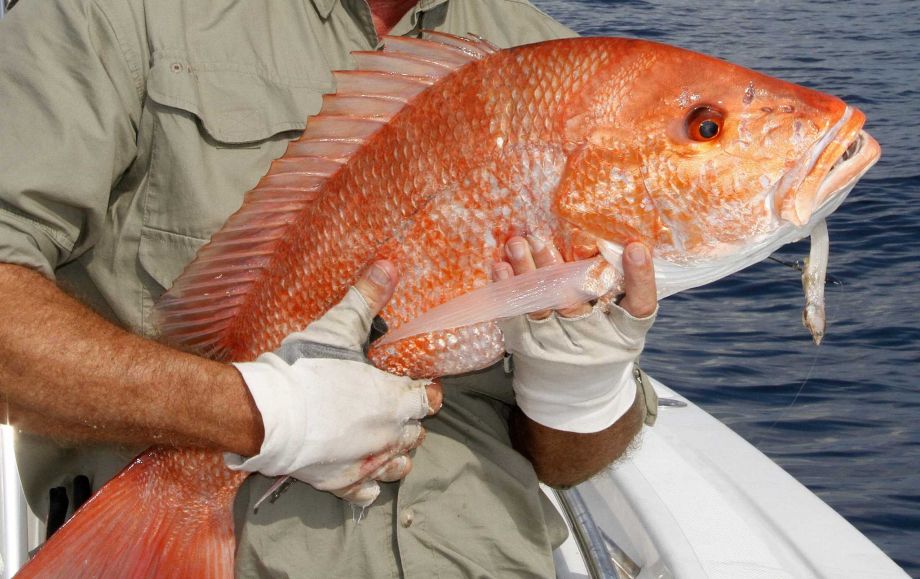Southeast Policy Director, Martha Guyas Represents ASA at Gulf Council Meeting and Shares Latest Developments
The Gulf of Mexico Fishery Management Council meets regularly throughout the year to develop regulations for managing fishery resources in the Gulf of Mexico. Several issues of interest to the recreational industry were discussed and a synopsis is below:
Red Snapper – The Council took final action to modify catch limits for red snapper based on the latest catch advice from its scientific advisors. If approved, the overall annual catch limit for the red snapper fishery would modestly increase from 15.1 to about 16.3 million pounds starting in 2023, but the overfishing limit (OFL) would decrease compared to a previous proposal by the Council that is now pending approval by the Secretary of Commerce (for more on that, read “New Issues Facing Gulf Red Snapper” on ASA’s blog).
Greater Amberjack – The Council discussed options but did not choose a preferred alternative on setting catch limits and allocations for greater amberjack. Greater amberjack is overfished and undergoing , and the fishery is facing significant catch limit reductions. ASA supports Action 1, Alternative 3, which would make the cuts necessary to rebuild the fishery while converting sector allocations to the same “currency” that will be used as the basis for catch limits moving forward and is now considered best available science. Public hearings will be held before the Council is scheduled to take final action at its October meeting.
The Council also directed staff to develop options for regional management of greater amberjack to be discussed at a future Council meeting.
Sector Separation – The Council directed staff to develop an options paper to examine the potential for sector separation for gag grouper, red grouper, greater amberjack, and gray triggerfish. Sector separation would split the recreational quotas for these species into separate recreational and federal for-hire components, similar to Gulf red snapper.
Gag Grouper – First, the good news on gag grouper: the Council decided to use Florida’s State Reef Fish Survey (SRFS) data for assessment and management of gag grouper moving forward. SRFS was designed to provide more accurate, timely, and precise recreational catch and effort data on gag grouper and 12 other reef fish in Florida. Because gag grouper is primarily a Florida fishery with a large recreational component, using SRFS to inform assessment and management is a no brainer and a big win. As with greater amberjack, ASA has been advocating for converting allocations to SRFS “currency,” since SRFS will now be used to set quotas and management for the fishery.
The bad news is that gag grouper is overfished and undergoing overfishing, so the fishery will face reduced catch limits and short seasons for the next few years. Part of the issue is that the stock has relatively few males (All gag grouper start their lives as females, then can change to males later in life.) As part of a strategy to rebuild the fishery, ASA supports measures that protect male gag grouper. To do that, the Council is considering a spawning season closure for the commercial gag grouper fishery, which operates year-round under an IFQ program and generally fishes in deeper water where the males live and aggregate with females to spawn. The recreational fishery is already closed during the spawning season and a pending interim rule would shorten the recreational season to September 1 through November 10.
Florida Keys National Marine Sanctuary (FKNMS) – NOAA recently released a draft rule that would expand the boundaries of the FKNMS, add new protected areas, and make numerous other changes to regulations in the FKNMS. Part of the FKNMS occurs in the Council’s jurisdiction of Gulf federal waters, so the Council will provide comments on how the rule affects fishing in the Gulf portion of the FKNMS. The Council will gather input from several of its advisory panels on the draft rule before weighing in. ASA will provide detailed comments to the Council and directly to the FKNMS, and in public testimony we highlighted the need to update the Protocol for Cooperative Fisheries Management between the Gulf Council, South Atlantic Council, Florida Fish and Wildlife Commission, and FKNMS.
Sharks – NOAA Highly Migratory Species Division staff attended the Council meeting to listen to fishermen’s concerns about shark depredation and provide an update on the status of several shark species in the Gulf of Mexico. Several shark stock assessments indicate that shark populations in the Gulf of Mexico are generally improving and show increasing trends in abundance.
The Gulf of Mexico Fishery Management Council met August 22-25 in Corpus Christi, TX. Council changes included Michael McDermott of Mississippi, owner of Pelican Point Marina, starting as the newest member of the Council. Troy Williamson, a long-standing recreational advocate from Texas, starting his second term on the Council, and Dr. Tom Frazer of Florida starting his third term. Also, Dale Diaz from Mississippi was elected chair and Dr. Greg Stunz from Texas was elected vice chair.
Note: The Council meets next October 24-27 in Biloxi, MS. For more information about the Gulf Council, contact Martha Guyas at mguyas@asafishing.org or visit the Council’s website.
Share This Article, Choose Your Platform:
Recent Posts



